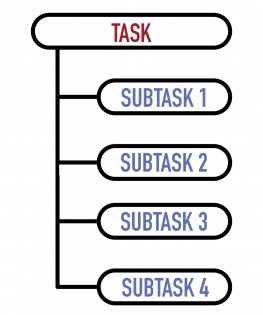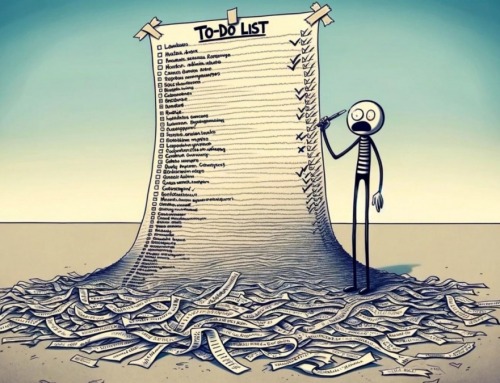Breaking tasks down into subtasks will help you to see large tasks as more approachable and doable, and reduces your propensity to procrastinate or defer tasks—because you simply don’t know where to begin. Here’s what you need to do…
Some tasks are simple
A simple task is an uncomplicated activity, a single unit of work. It’s usually completed in just one or two steps.
For example, on your to-do list is: Turn on the light. You flip the switch—and it’s done—task completed.
A simple task doesn’t take forever to complete. It isn’t related or interconnected with any other task. Once you’ve done it, you check it off your task list and you can essentially forget about it—except to turn the light off. Simple!
Some tasks are complex
 However, some tasks are more complex and need to be broken down into smaller, actionable subtasks. We also call complex tasks projects. If you don’t break it down into subtasks, you lose clarity about what to do next.
However, some tasks are more complex and need to be broken down into smaller, actionable subtasks. We also call complex tasks projects. If you don’t break it down into subtasks, you lose clarity about what to do next.
For example: Turn on a light. You flip the light switch, and nothing happens—that means you have to change the lightbulb. Now your simple one-step task has become a multi-step task!
The task now involves a series of subtasks that need to be completed: getting a ladder, finding someone to hold the ladder, finding the right light bulb, climbing the ladder, etc.
A complex task is a series of subtasks that build on each other—like climbing the ladder, you have to go up one rung at a time—a task is completed after accomplishing all the subtasks.
Confusion occurs when you fail to break a task down into smaller, simpler tasks. This leaves you wondering where to start and confused about what steps to take next.
So now, if you’re unclear about the specific next action you need to take to complete a task, here’s what you need to do: Be micro-ambitious!
Think: Smaller subtasks!
Just focus on the very next subtask you need to complete. You don’t have to complete the whole task, just the very next step.
Why is that task still on your to-do list—and what you should to now. Watch video below…
Increase your effectiveness with PlanPlus Online.
A productivity system for leaders.








